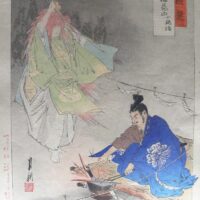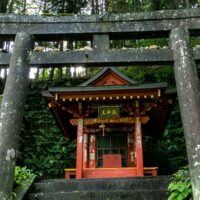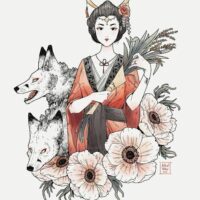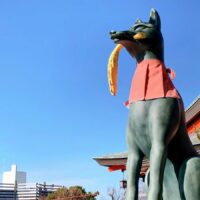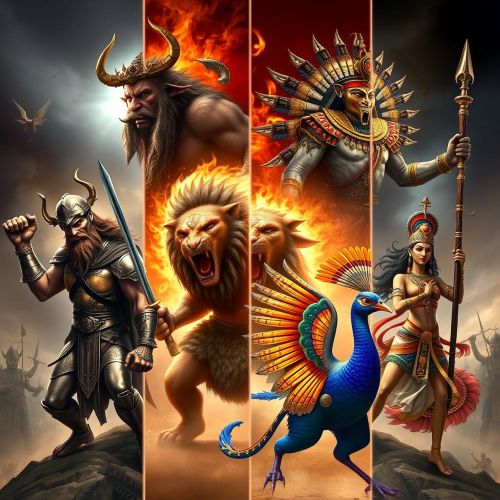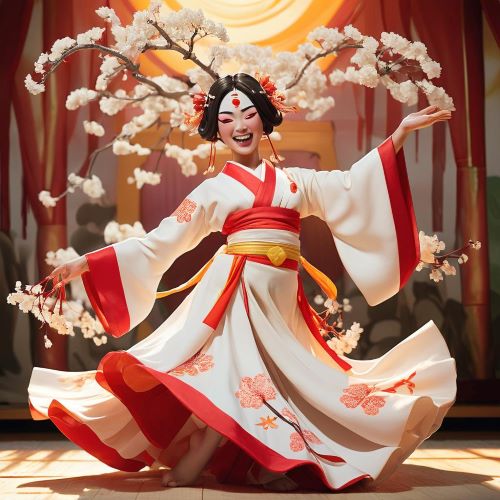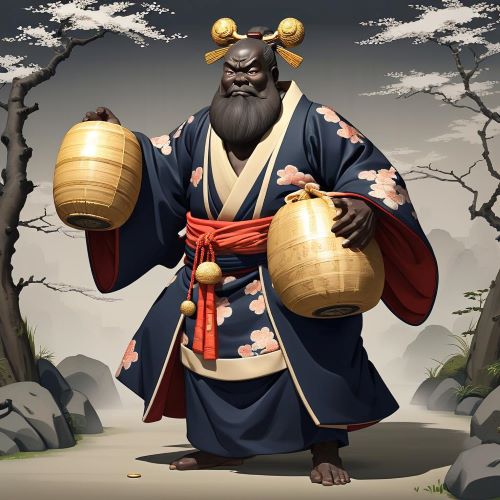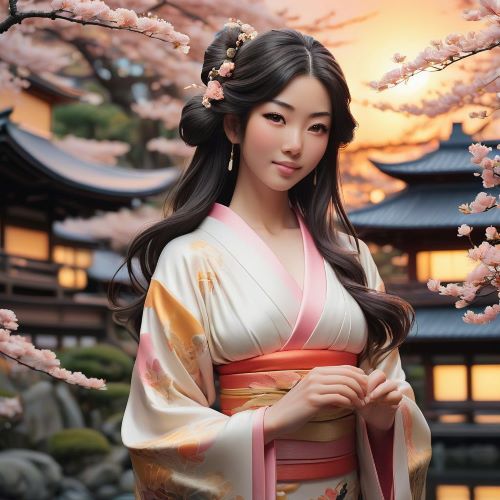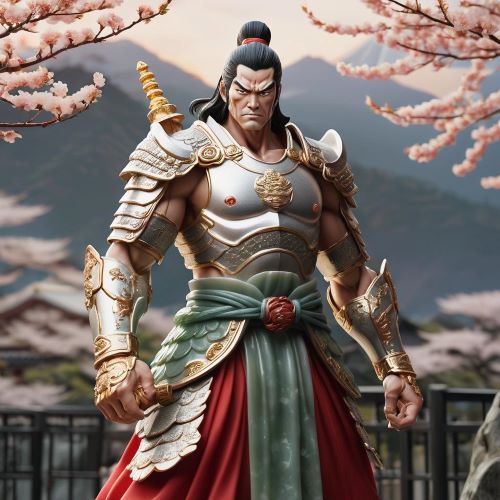Inari : Goddess of Wealth
Listen
At a glance
| Description | |
|---|---|
| Origin | Japanese Mythology |
| Classification | Gods |
| Family Members | N/A |
| Region | Japan |
| Associated With | Foxes, Prosperity, Wealth, Success |
Inari
Introduction
In Japanese mythology, Inari shines brightly as a deity associated with rice, fertility, prosperity, and foxes, holding a unique position in Shinto belief. Revered across Japan for centuries, it also known as Inari Ōkami or Ō-Inari, is a significant figure in the pantheon of Japanese Shinto gods, blending elements of agriculture, spirituality, and mysticism into a captivating entity that continues to fascinate and inspire. Inari’s influence permeates Japanese culture, evident in countless shrines, vibrant festivals, and enduring folk beliefs. Associated with foxes, fertility, rice, tea, sake, agriculture, industry, and general prosperity, Inari’s worship dates back to the founding of a shrine at Inari Mountain in 711 AD, although some scholars believe that worship started in the late 5th century.
Physical Traits
Depictions of Inari vary, but a common image emerges: a divine figure with flowing robes and a serene countenance, sometimes exhibiting fox-like features or accompanied by foxes, embodying otherworldly grace and wisdom. The fox is a recurring motif, symbolizing cunning and protection in Japanese folklore. Unlike many deities with fixed appearances, Inari exhibits a fascinating fluidity in physical form. Inari is traditionally depicted as an elderly male figure with a benevolent countenance, adorned in flowing robes and a ceremonial headdress. However, it can also manifest as a young woman, symbolizing fertility and abundance, or as androgynous, reflecting the deity’s multifaceted nature.
A defining characteristic of Inari’s iconography is the association with foxes, or kitsune, serving as messengers and guardians. These foxes, often depicted as white or red with exceptional intelligence, frequently appear in Inari shrines as statues holding keys, symbolizing the deity’s role as the guardian of wealth and storehouses.
Family
Inari’s origins and familial ties are shrouded in mystery. Some scholars believe Inari is a singular deity, while others view Inari as a collective of multiple kami. There are connections drawn between Inari and Uka-no-Mitama, the Shinto goddess of food, and Toyouke, another deity associated with agriculture, highlighting the evolving nature of Shinto beliefs and the merging of deities with similar functions. Inari is sometimes seen as a collective of three or five individual kami, reflecting diverse interpretations.
Often depicted as the child of major deities like Izanagi and Izanami, the divine couple responsible for creating the Japanese islands, Inari’s lineage is steeped in primordial origins. Various myths also associate Inari with other deities, weaving a complex web of divine relationships that underscore Inari’s importance within the Shinto pantheon.
Other names
Inari’s diverse roles are reflected in the numerous names associated with the deity. Ō-Inari, meaning “Great Inari,” emphasizes Inari’s preeminence. Ukanomitama-no-kami and Omiyanome-no-kami link Inari to food and rice cultivation, while Inari-no-kami, translating to “Inari of the Foxes,” highlights the connection to foxes. These various names underscore the multifaceted nature of Inari’s worship.
Regional variations in worship contribute to the different names for Inari across Japan. In some areas, Inari is referred to as Ukanomitama, emphasizing agriculture and fertility, while Oinari-sama is commonly used in the Kanto region. The deity’s full name, Inari Okami, translates to “the Great God Inari,” and is sometimes shortened to O-Inari. Another name, Ta-no-Kami, or “God of the Paddy Fields,” further reflects Inari’s agricultural associations. In a Buddhist context, Inari may be linked to a bodhisattva, adopting secondary names related to the bodhisattva’s path toward enlightenment.
Powers and Abilities
Inari’s power ensures prosperity and well-being, primarily through granting bountiful harvests. Farmers pray to Inari for protection against crop failures, pests, and natural disasters. Beyond agriculture, Inari’s blessings extend to business success, wealth accumulation, and overall prosperity. Some narratives also credit Inari with healing powers, capable of curing ailments and ensuring longevity, reinforcing Inari’s role as a benevolent deity.
Devotees pray to Inari for financial success and protection, believing in the deity’s ability to bestow blessings upon those who honor them. Inari’s association with foxes adds mystical abilities like shape-shifting and illusion-casting, enhancing the deity’s enigmatic nature. Revered by merchants and tradesmen, and considered the patron deity of swordsmiths, Inari’s influence spans various aspects of prosperity.
Inari is connected to the concept of the divine feminine in Shingon Buddhism, specifically daikiniten, which links the deity to the power of foxes and additional Buddhist attributes like purifying light. This blend of Shinto and Buddhist elements further enriches Inari’s multifaceted character.
Modern Day Influence
Inari’s influence on modern Japan is undeniable, with countless shrines dedicated to the deity, recognizable by their iconic red torii gates. Fushimi Inari-taisha in Kyoto, with its famous tunnel of torii gates, stands as a testament to Inari’s enduring popularity. The fox remains a potent symbol, with kitsune statues guarding Inari shrines and fox masks being popular during festivals. Businesses often display Inari statues or fox figurines to attract prosperity, reflecting Inari’s association with good fortune.
In addition to physical manifestations, its influence extends to cultural practices. The concept of omotenashi, Japanese hospitality, is said to have roots in Inari worship, emphasizing generosity and good fortune in business interactions. The popularity of sake also reflects Inari’s connection to food and agriculture.
In modern times, over one-third of Shinto shrines in Japan are dedicated to Inari, and many companies, such as Shiseido, revere Inari as a patron kami, with shrines atop their corporate headquarters. This widespread reverence for Inari is a testament to the deity’s significance in Japanese society, bridging tradition and contemporary culture. Despite the passage of time, Inari’s influence remains palpable, captivating new generations of enthusiasts across various aspects of Japanese life.
Related Images
Frequently Asked Questions
What is lorem Ipsum?
I am text block. Click edit button to change this text. Lorem ipsum dolor sit amet, consectetur adipiscing elit. Ut elit tellus, luctus nec ullamcorper mattis, pulvinar dapibus leo.
What is lorem Ipsum?
I am text block. Click edit button to change this text. Lorem ipsum dolor sit amet, consectetur adipiscing elit. Ut elit tellus, luctus nec ullamcorper mattis, pulvinar dapibus leo.
What is lorem Ipsum?
I am text block. Click edit button to change this text. Lorem ipsum dolor sit amet, consectetur adipiscing elit. Ut elit tellus, luctus nec ullamcorper mattis, pulvinar dapibus leo.
What is lorem Ipsum?
I am text block. Click edit button to change this text. Lorem ipsum dolor sit amet, consectetur adipiscing elit. Ut elit tellus, luctus nec ullamcorper mattis, pulvinar dapibus leo.
What is lorem Ipsum?
I am text block. Click edit button to change this text. Lorem ipsum dolor sit amet, consectetur adipiscing elit. Ut elit tellus, luctus nec ullamcorper mattis, pulvinar dapibus leo.


